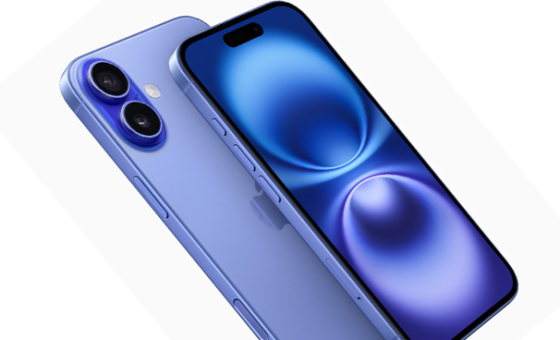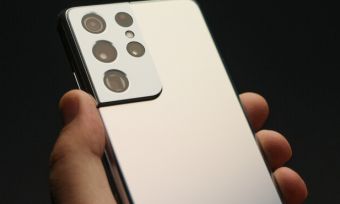Compare cheap mobile phone plans in Australia from under $20
The cheapest mobile plans tend to be SIM-only plans, as opposed to plans that are bundled with a phone. But whether you choose a prepaid or postpaid plan and how much data you include in your plan will determine how much you pay. This page will help you narrow down some of the cheapest options available for both postpaid and prepaid users.

Instantly compare 200+ Canstar Blue expert rated products based on these selections
included
Showing 10 of 237 results
Unsure of a term in the above table? View glossary
The initial results in the table above are sorted by Advertised Cost (Low-High) , then Value Rank out of 10 (High-Low) , then Provider Name (Alphabetical) . Additional filters may have been applied, which impact the results displayed in the table - filters can be applied or removed at any time.
SPONSORED
SIM-Only prepaid | 1 month recharge period
-
Canstar Blue Most Trusted Mobile Plan Providers 2024
-
Canstar Blue Most Satisfied Customers Prepaid Mobile Sim Only 2024
Why compare phone plans with Canstar Blue?
Easy to compare
Compare plans from over 30 providers. Filter by price, provider, inclusions and more.
100% free to use
ur comparison tool is free to use, always, with no sign up required. Just compare and go.
Switch with confidence
With our handy guides and comparison tool, you have everything you need to choose the best plan for you.
What are the cheapest phone plans?
Here is a list of some of the cheapest mobile plans currently on market. Keep in mind not all plans will include unlimited calls or SMS and plan prices and inclusions may change.
Cheapest Phone Plans
- LycaMobile 4GB SIM-only postpaid — $15 per month, 4GB data, unlimited standard national calls and SMS
- TeleChoice 6GB SIM-only prepaid — $17 per 28-day recharge, 6GB data, unlimited standard national calls and SMS
- Exetel 7GB SIM-only prepaid — $18 per 30-day recharge, 7GB data, unlimited standard national calls and SMS
- ALDI Mobile 10GB SIM-only prepaid — $19 per 30-day recharge, 10GB data, unlimited standard national calls and SMS
- Flip 20GB SIM-only postpaid — $19.90 per month, 20GB data, unlimited standard national calls and SMS
How to choose the best cheap mobile plans
When it comes to choosing cheap phone plans in Australia, the key to comparing plans — considering most plans include unlimited standard national calls and SMS — is how much mobile data is offered. It’s a great indication as to which telcos offer what value for money.
1. The most important thing to consider is data
Data inclusions are perhaps the most important part of a plan for many of us — it lets us check maps, upload to social media, and stream video on the go and without the need for WiFi. That’s why knowing how much mobile data you actually need on your plan will help you to determine if a cheap plan will have enough gigabytes for you.
2. Check the data usage on your current plan
One of the easiest ways to work out how much data you use is to check your current mobile plan — you can either check your mobile bill, or log in to your account on the website or via the telco’s app (if available) to find your data usage. Check back during different billing cycles, or look at old bills, to work out how much you typically use.
3. Check your device to see how much mobile data your apps use
Most devices should offer information on how much data is consumed from the apps your using (Apple’s iOS shows how much over a certain period of time, which could be for as long as you’ve had your phone) — simply go to your device’s settings and find the ‘mobile data’ section to see what information is available (navigating to this will vary between devices).
4. What kind of mobile user are you?
Light user — you mostly use your phone when connected to a WiFi network, however when you’re using mobile data, you occasionally use maps, browse the web and check emails, for less than 10 hours per month: requires 1GB to 10GB of data.
Moderate user — you use WiFi but are also out of the house frequently and rely on mobile data for regular social media checking, web browsing, emails, music streaming and occasional video streaming for several hours each week, around 20 hours per month: requires 10GB to 40GB data.
Heavy user — you use mobile data every day for several hours and for activities like video streaming, gaming, social media, music streaming and general web browsing: requires 50GB data or more.
Once you have a clearer picture of how much data you need, you’ll know which data inclusions to look for when you compare phone plans. Heavy users will of course need to fork out a bit more cash for a higher data plan, while light and moderate users can easily find cheap plans with the right amount of data for their needs.
If you’ve signed up to a cheap plan that doesn’t have enough data for your usage requirements, you could find yourself paying excess data charges or constantly recharging your prepaid plan, and suddenly the plan isn’t so cheap. Be realistic about how much you’ll need, and look for plans with the right data inclusions for you.
Pros and cons of cheap mobile plans
Just because a plan is cheap, doesn’t mean it’s going to be the best plan for you. Depending on your needs, the cheapest mobile plans might not offer you the best value for money.
Here are some of the pros and cons you might want to consider about cheap phone plans. In this instance, we’re talking about plans that are $40 per month or less.
Pros:
- They’re cheap — obviously!
- Plenty of choices of SIM-only prepaid and postpaid plans
- Providers now offering more data at cheaper prices
Cons:
- Not great for big data users
- Might not include any extras such as international calls
- Only available as SIM-only (no new smartphone included)
What to expect from cheap phone plans
Cheap mobile plans can be a great option if you’re looking to save money, but they can also include some serious value. These days, cheaper phone plans often include bigger data amounts, so if you’re looking to save some money, there are plenty of options to choose from.
What to expect from cheap plans under $20
While some providers used to offer phone plans around the $10 price point, you’ll find only a handful of plans start at just under $20, although there are a few plans around $10, but these are usually prepaid plans on a seven-day expiry period.
Plans around the $20 price point will include a small amount of data, usually around 4GB-10GB. You can find both prepaid and postpaid plans at this price point. These plans are ideal for anyone who doesn’t use their phone much, such as young kids or seniors. These plans can offer good value for money if you’re looking to save on your phone plan and don’t need too much data.
What to expect from cheap plans under $30
Moderate phone users can easily snag a bargain when comparing plans for $30 or under. Generally you can find plans around this price point with anywhere between 10GB to 30GB of data.
Prepaid and postpaid plans in this price range are great for moderate to higher data users who are still looking to save on their phone plan.
What to expect from cheap plans under $40
Plans at $40 or under are still rather cheap when you consider how much higher plan prices can go, especially from the big telcos.
Typically plans at this price offer rather generous data inclusions to suit moderate to higher data users. You can find prepaid and postpaid providers offering data around 50GB at this price point.
Competitive market means cheaper phone plans
The good news is that the phone plan market has never been more competitive. Not only do customers have the choice of the big name telcos, but also a huge number of smaller telcos, all vying for your business. However, while everyone likes to save money, the cheapest plans aren’t going to suit everyone.
The bigger telcos might offer the flashier extras and bonuses, but the smaller telcos are trying to win customers over by offering more data at cheaper prices. As the competition heats up, telcos continually add on more data to plans and lower prices. Plans between $20-$30 and with around 10GB of data or more are now more widely available than they used to be. You’ll also find 5G network access is more widespread on cheap mobile plans than it once was.
Extras such as international calls will typically be included on more expensive plans — if they’re available at all— so you’ll need to keep in mind if the simple call, SMS and data inclusions are all you require on a plan.
The cheapest mobile plans come from smaller telcos
You will find these cheaper plans come from smaller telcos, known as Mobile Virtual Network Operators (MVNOs). Some of these telcos might be unfamiliar names and, understandably, you could feel hesitant about signing up to a lesser-known provider. While it’s important to note that you won’t get the exact same service as you would signing up to the big three telcos (which all own and operate their own mobile networks), the MVNOs typically still have a wide network range, and will use one of the three mobile networks to deliver services. However, it’s still worth checking the network coverage map before signing up to a new telco.
Do cheap phone plans have a catch?
You might look at a cheap mobile plan and think that what it’s offering is too good to be true, and that could be the case. A couple of the key things you’ll need to be on the lookout for with a cheap plan is the plan length and any limitations on inclusions.
1. Check the expiry period
The cheapest prepaid phone plans are often offered on a short expiry period of around seven days. That means you’ll need to recharge your plan at least four times a month and suddenly it isn’t so cheap.
2. Are there any limits on calls or SMS?
Another thing to look out for is if the plan has limitations on calls and/or SMS. While it’s not very common anymore (unlimited standard national calls and SMS is offered by default from most telcos), there are still a few cheap prepaid and postpaid plans floating around with limited minutes for phone calls. If you make a lot of calls, you might want to look at plans with unlimited calls.
3. Try a plan out before committing long term
If you’re unsure about signing up to a cheap plan from a smaller provider, look for plans where there aren’t any cancellation or early exit fees — such as prepaid plans or month-to-month postpaid plans — so you can cancel your plan if you’re unhappy or if it isn’t meeting your needs. But be sure to check the plan’s critical information summary for any exit or cancellation fees or other catches, before signing up.
Otherwise cheap phone plans can offer some great value for money — just make sure the plan suits your needs.
About our mobile phone experts
Emma Bradstock, Senior Telco Specialist
Emma Bradstock is Canstar Blue’s Senior Telco Specialist, which means she covers all things internet- and phone-related, from news about the latest smartphone releases to 5G guides, hot NBN deals and mobile and internet industry news. Her specialist area is in-depth handset reviews, in which she puts new phones to the test to determine whether their specs add up to value for money. Emma also leads Canstar Blue’s ratings for the tech sector and plays a key role in presenting Canstar Blue’s internet and phone ratings and awards to readers.
Emma’s passionate about helping consumers find a better deal on their phone and internet plans, along with explaining hard-to-understand topics and identifying products worth purchasing so Aussies can buy with confidence. Her experience in creating content for websites, social media, in email and on video allows her to provide this info for consumers in plenty of formats and on multiple platforms – handy when the topic is particularly tricky.
Meet the Editorial Team Josh Filosi, Data Insights Analyst
Josh Filosi, Data Insights Analyst
Josh Filosi is a Data Insights Analyst at Canstar, where he uses his expertise in data analysis and interpretation to develop and deliver the methodology for Canstar Blue’s Value Rankings and Outstanding Value awards in the telecommunications sectors.
His double-major in Economics and Behavioral Science from Griffith University provides him with the analytical skills and understanding of consumer markets to uncover insights in complex data, as well as passion for helping consumers find genuinely good deals when faced with countless competing options for their hard-earned cash in the Internet and Phone sectors.
Josh’s real love for all things tech gives him a unique perspective, too, on the telecommunications industry and the needs of its customers – staying up-to-date with the latest developments in the field is no onerous task, and it means Josh spots small details that can add up to a big difference to customers. He recently worked on the development of a Value Ranking methodology for the growing wireless broadband sector.
Josh relishes the opportunity to dedicate his professional effort to the cause of tech and telco users and is keen to continue building his understanding of this fascinating, ever-changing industry. When Josh isn’t poring over telco data, he likes to tinker with gadgets and electronics.
Meet the Research Team
FAQs about Cheap Phone Plans
Important information
For those that love the detail
This advice is general and has not taken into account your objectives, financial situation or needs. Consider whether this advice is right for you.

















